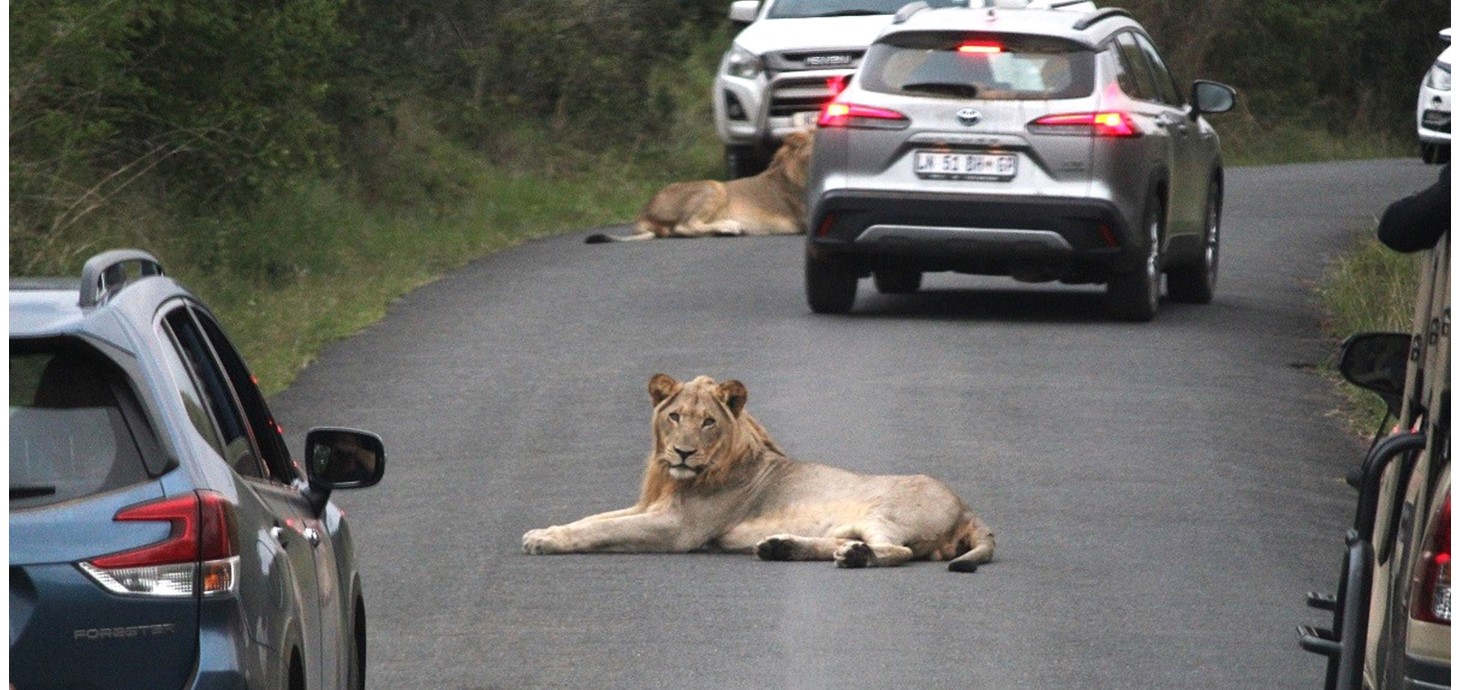
Young African lions on the road in Hluhluwe National Park, South Africa. When they leave their mothers, young male lions have to disperse to find new territories. To do this, they travel through the savannah, now dominated by roads and tourist activities, which have an impact on their movements and behaviour. Credit: Sara Gomez, CEFE-CNRS, Université de Montpellier
New research led by Swansea University will help scientists predict where and when animals will move, a task which is becoming more urgent, given the current rapid pace of global change.
On our planet, at any one moment, billions of animals are on the move. From migratory birds, insects, marine mammals and sharks connecting distant continents and seas, to bees and other insects pollinating our crops, to grazing animals roaming across the plains, and the foxes and hedgehogs visiting urban gardens.
Understanding the complexities of how and why animals move is vital. It can help to conserve species, but also to protect wider ecosystems and our environment and the many services these provide to human wellbeing.
The study of animal movement has grown fast in recent decades. Most animal movements go unobserved by humans, but using technology - radiotracking, GPS, satellite tags, Fitbit-type sensors, radar - we can record them in impressive detail. Billions of new data are recorded each year, analysed using increasingly sophisticated statistical and mathematical methods.
However, much of this work still focuses on describing and understanding current patterns, rather than predicting future movements.
The problem is that using the past and present as a guide will be of limited use given how quickly environments are changing, due to new patterns of land use, climate change, and human population shifts.
This is where the new research comes in. It sets out a framework that can help scientists provide more robust predictions in rapidly changing environmental conditions.
The research has been carried out by an international team, formed during an annual meeting of the Movement Ecology group of the British Ecological Society, led by Prof Luca Börger of the Department of Biosciences at Swansea University and two former students from the department, Sara Gomez and Dr Holly English, who are now researchers at the CNRS in Montpellier (France) and University College Dublin (Ireland), respectively.
In the research paper, the team set out the full range of human-induced changes in environmental conditions and review how they impact and drive animal movements. These include overall changes in climate, such as warming oceans, as well as more specific impacts such as urbanisation, construction, light pollution, oil spills and invasive species.
They highlight how scientists need to change the ways they collect and model data, in order to develop better predictions about how animals move in changing landscapes, and how this can be used to design improved conservation actions and policies.
Lead author Sara Gomez of CNRS (Centre National de la Recherche Scientifique) Montpellier said:
“To predict where animals will move in rapidly changing environments, we cannot rely on correlative approaches. We must incorporate biological mechanisms into our models, starting from first principles of animal movements and decision making, and develop models adequate for dynamical systems.
We must also increase the number of different species studied and record their movements also in human-dominated environments and not only in more undisturbed natural areas”.
Co-lead Dr Holly English of University College Dublin said:
“This is not just for scientific interest. We discuss the challenges and opportunities of including these predictions into more effective wildlife management and policy. We give examples of conservation schemes, such as rewilding and translocations, which offer exciting, but vastly unused, opportunities to collect data from novel environments and test our model predictions.”
Professor Luca Borger of Swansea University biosciences department, lead researcher, said:
“Animal movements fundamentally affect ecosystem processes. Current research in the field however fails to address one of the most pressing problems we are facing: predicting where and when animals will move in rapidly changing or ‘novel’ environments. We believe we are at an exciting point now where we can achieve such a crucial transformation in our field, from a descriptive to a predictive science, which is much needed under current rapid global change.”
The research is published in the Journal of Animal Ecology, under the title 'Understanding and predicting animal movements and distributions in the Anthropocene '.
Find out more - Swansea Lab for Animal Movement (Swansea University biosciences department)
